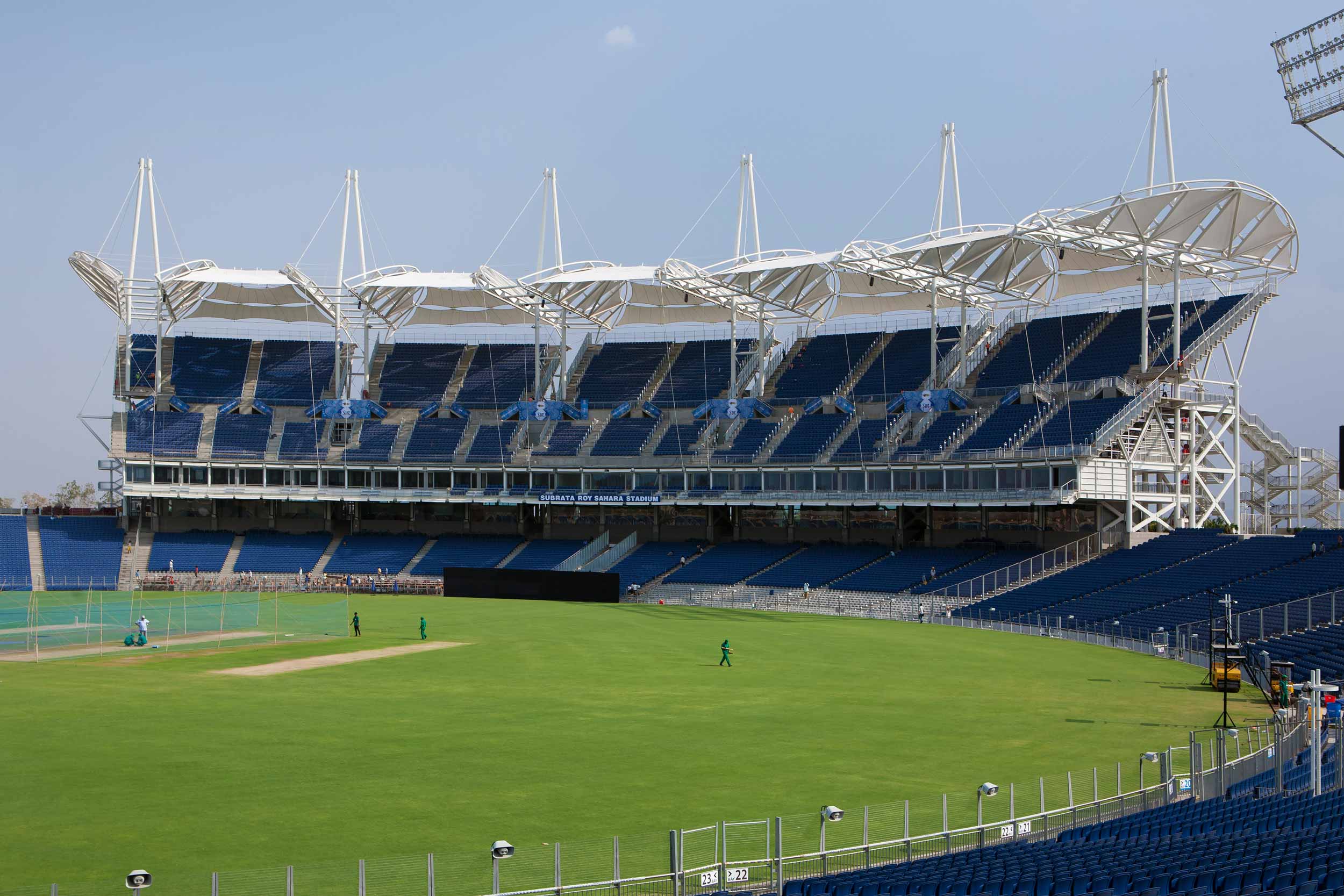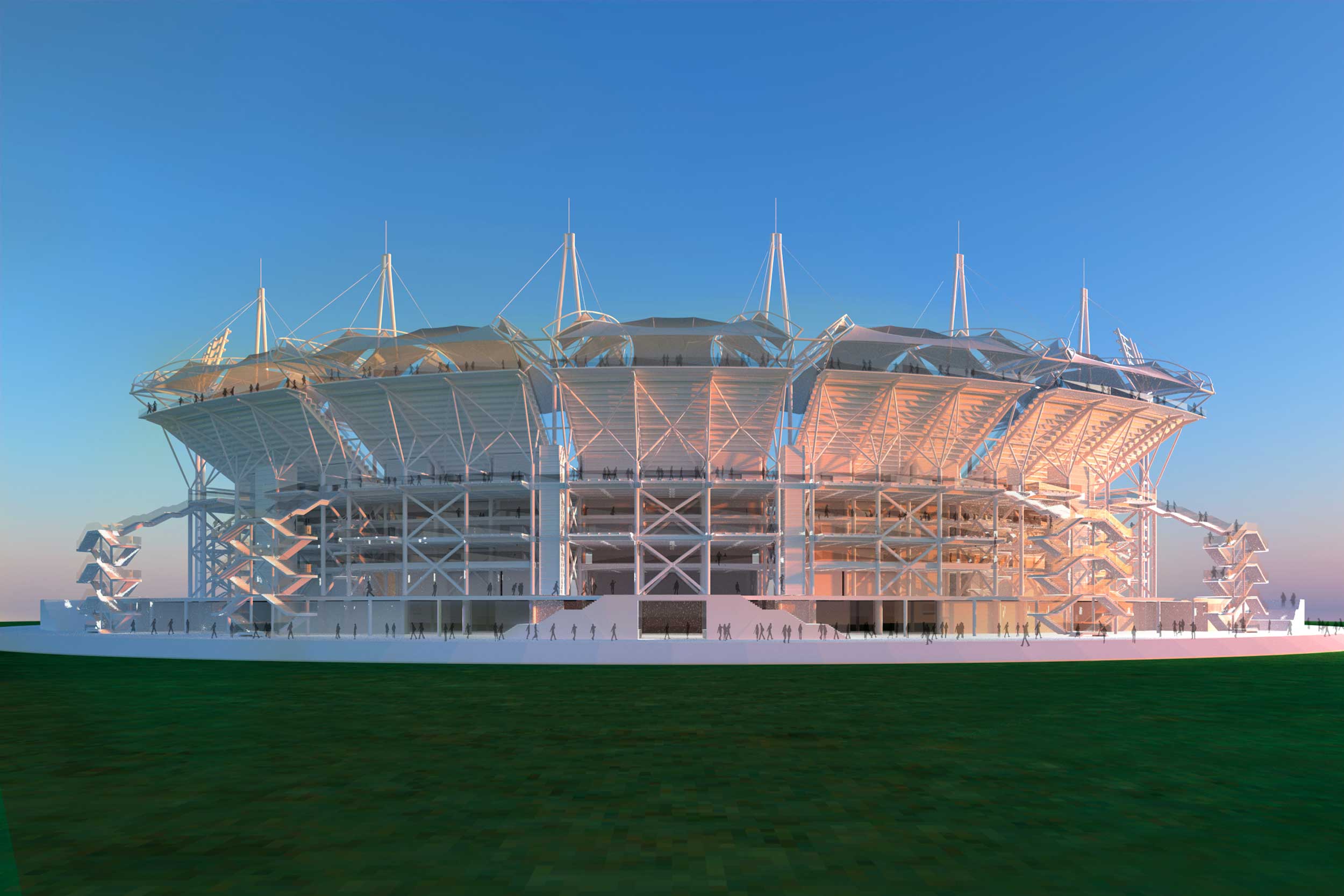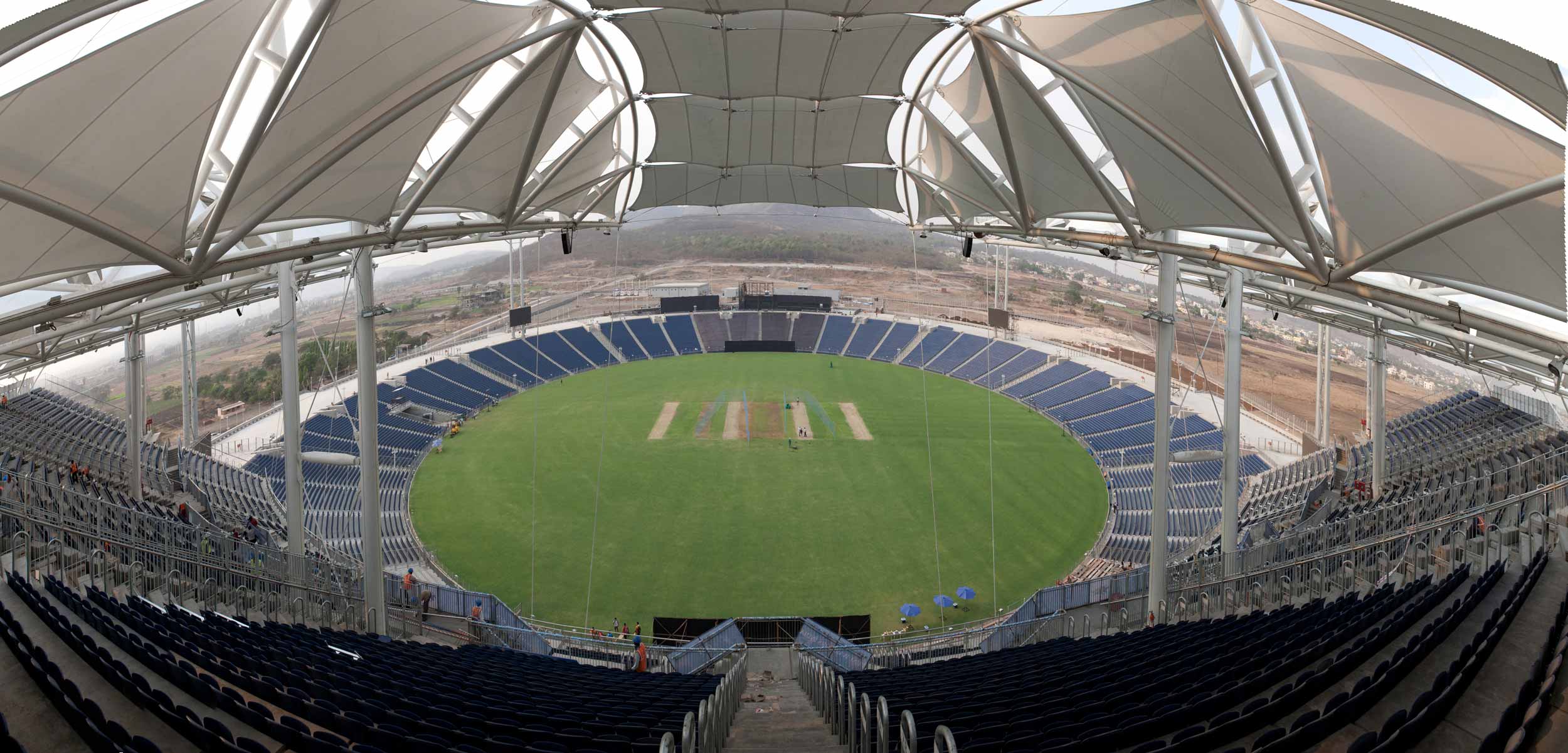
When Hopkins Architects were commissioned to design an international-standard, iconic cricket ground near Pune in north-west India, we developed a structural design that met its aesthetic and functional demands. The end result provides 55,000 fans with views both of the pitch below and the stunning mountain scenery enveloping them.
International cricket stadium designed to withstand seismic activity
The design included facilities for members at a range of levels: from corporate boxes and a member’s pavilion, to leisure amenities such as a swimming pool and spa. The terraces were located with the sport in mind, aiming to align spectators with the wickets to provide the best vantage point. We undertook parametric modelling to boost the ‘C-values’ (the quality of vision from the seat to the event); as a result, stands were elevated to maximise views for those members on the lower tiers.

The site is a greenfield one, so contamination was minimal, but the gradient was variable and required a cut and fill exercise to provide a level surface for the foundations. The aim was to create a stadium with minimal use of columns that is lightweight and cost-effective, yet able to withstand extremes of seismic activity and redirect sunlight.
First, we used finite element analysis on data from recent earthquakes and were able to predict how the structure would behave under severe stress, pinpointing weak areas. We specified a weighty in-situ concrete base, bearing onto basalt stratum, which anchors the superstructure.
Lightweight tiers formed from steel and precast concrete span up to 24 m, with short fabric canopies over the east and west stands and a 50 m-long canopy over the south-facing pavilion to simultaneously keep spectators in the shade and reduce shadow on the pitch itself. Strengthening elements such as the circulation cores provide a light, reasonably flexible structure with extra bracing.
